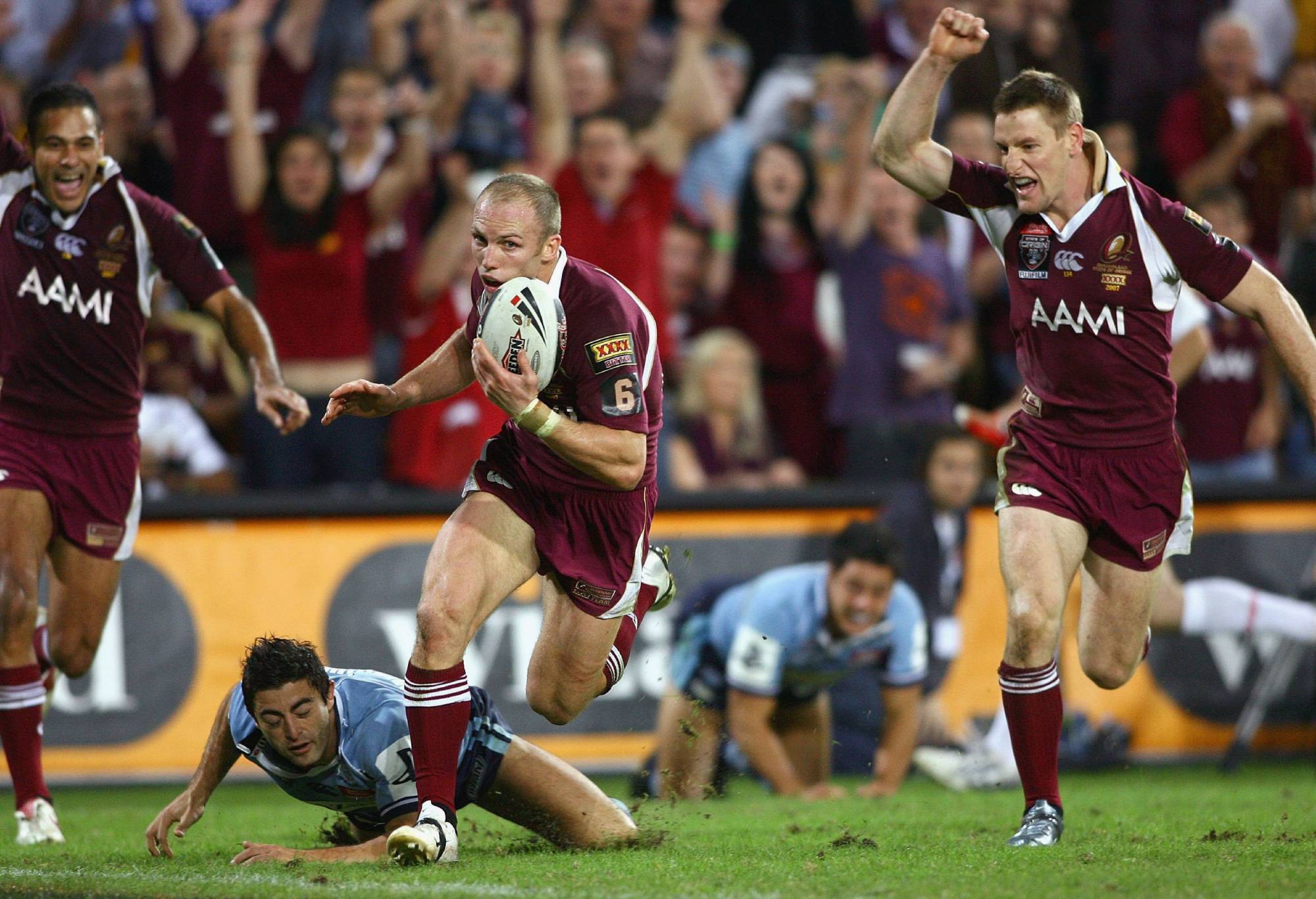Then there are the key moments in history that keep fans awake at night:
• What if Ellery Hanley had avoided Terry Lamb’s coat hanger in 1988? (Canterbury still win, they were the better team on the day)
• What if Warren Ryan had trusted his starting forwards to finish the job in 1989? (Balmain likely win, experience would have told) What about his two replacements for Newtown in 1981? (I still think Brett Kenny would have cut loose).
• What if Ben Hunt had caught the kickoff in extra time in 2015? (North Qld still win, they were coming home with a wet sail).
• What if Darcy Lawler had bet on Wests instead of (allegedly) St George in 1963? (Wests win, gain confidence and win again in 1964. The aura of St George’s invincibility is broken. They win further premierships in the 1960’s but are merely one of the great teams like Balmain in the 1920’s or Souths of the late 1960’s to early 1970’s. The wider implication is, with the unhealthy dominance of one club broken, does rugby league move on from the unlimited tackle rule as quickly as it did?)
• What if Darren Lockyer hadn’t pounced on a loose ball to score in the third Origin match of 2006? (Lockyer and Petero are maybe even dropped, the Melbourne connection do not get a roll on, Origins might still be dominated by the golden era of QLD players but to the tune of maybe two out every three years and we think more kindly of Mitchell Pearce and Paul Gallen)

Darren Lockyer. (Photo by Bradley Kanaris/Getty Images)
If we cast our gaze a little wider than this, we can identify other sliding doors moments that may have changed the very face of rugby league in Australia and around the world. In this and a few future articles, I will present a selection of such moments as well as brief comments on what might have happened. This first instalment focuses on the early years of rugby league in Australia.
WHAT IF?
What if Rugby League had not received some free kicks in its early years?
If Dally Messenger had accepted a contract and stayed in England after the All Golds Tour?
With Dally Messenger becoming a legendary mid-fielder for Tottenham Hotspur (yes they did approach Messenger in 1907), Rugby League fails to gain the same traction in 1908 but still comes into being on the back of exhibition matches against the returning All Golds, albeit without the Messenger factor. The coffers are bare, the code struggles and remains very much a second-tier sport for the working class, especially due to the knock-on effect of the next two points below. In Queensland, league barely develops at all and is almost completely subsumed back into rugby union by 1920.
If Rugby League hadn’t successfully raided the Wallabies in 1909?
Following the previous point, rugby league does not have the funds or wider appeal to raid the Wallabies. The money-spinning Wallabies vs. Kangaroos series does not occur. The first England rugby league tour of Australia is a financial disaster as the weaker Australian team is flogged. Rugby union remains strong and competes successfully against the All Blacks and England. Famous Wallabies throughout history now include Reg Gasnier, Clive Churchill and Wally Lewis.
If QLD had adopted Australian Rules as their winter sport of choice over rugby union in the 1880’s?
The first recorded game of “Victorian Rules” was played in QLD in 1866 and this code was the premier game in South East Queensland until the late 1880’s, also being the game of choice in the grammar schools. However from the mid-1880’s Rugby Union steadily gained a popular foothold on the back of a Queensland representative side defeating NSW at home in 1883 and in Sydney in 1886. In the late 1880’s the three grammar schools: Brisbane, Ipswich and Toowoomba informally adopted rugby union as their sport with all three only playing rugby by 1890. But up to that point, senior clubs and schools had played both codes or a hybrid game, with Victorian Rules enjoying the greater popularity.
CLICK HERE for a seven-day free trial to watch the NRL on KAYO
Here is a great summary of this history by Sean Fagan, showing how close Queensland was to becoming an Aussie Rules state:
But what if QLD had been soundly beaten by NSW in those first rugby fixtures and what if the clubs and schools continued to play the game that had been more popular up to that point? What if, instead of defeating NSW at Rugby, QLD had beaten them at Australian Rules and then travelled to Victoria and put up a fight against that Australian Rules powerhouse?
Union is not played in QLD grammar schools. QLD becomes the 5th state to have Australian Rules as its premier winter sport. NSW rugby union and later the breakaway rugby league have little interstate competition and Victorian Rules is a legitimate competitor in that state. The local NSW Australian Rules competition becomes more popular, attracting players keen to test themselves against other states. In time the great NSW and QLD players make their name in the annual Australian Rules interstate competition which has dominated the country since the 1930’s – Jimmy Craig, Reg Gasnier, Clive Churchill, Wally Lewis, etc.
The financial clout of New South Wales inevitably starts to draw players from other states and over the next 70 years, it comes to rival and even surpasses the Victorian Football League as the country’s premier competition, while QLD, WA and SA continue to provide stiff competition as the perennial underdogs. The NAFL (National Australian Football League) is formed and raises the interstate competition to full-time professional level with the state leagues becoming feeders for their state franchises. An eight-team national football competition comprising all states and territories thrives. In order to expand, NSW and Victoria are each split into two sides and in time the code expands to incorporate two sides in each of South Australia, Western Australia and Queensland plus one in New Zealand to form a 14-team national competition.
Rugby Union retains some hold in private schools in NSW, but is swamped by Australian Rules in most markets and has no other states to play against at the top level. Rugby League withers and dies, being absorbed into the national rugby union as the second winter code around the country, remaining an amateur game played primarily in NSW schools and by old boys.
Association football supporters lament the short-sightedness of the country refusing to adopt the ‘World Game’ as its chosen winter sport.
It is scary to think that the current status of rugby league may have depended on Dally Messenger remaining uninjured and in the sport, on NSW entrepreneur (Joynton Smith) bankrolling a Kangaroos vs. Wallabies series in 1909, or on QLD leaving Victorian Rules behind before rugby league even came into existence.
In future instalments of this ‘What If’ series, I will look at some sliding doors moments affecting the player market, Super League, State of Origin and International matters.

